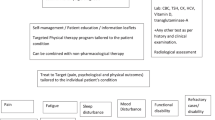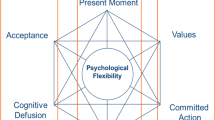Summary
This study examined the factors influencing the use of complementary therapies in patients with fibromyalgia. A postal questionnaire was sent to 90 patients who had attended a rheumatology out-patient clinic in West Yorkshire for their diagnosis or treatment of fibromyalgia. Seventy-one per cent of fibromyalgia patients had used or were using complementary therapies. Patients who were using complementary therapies were of a higher socio-economic group (p<0.001). The most popular therapy was oral supplementation. The duration of complementary therapies ranged from 3 months to 26 years (median=3). The number of therapies used by each patient ranged from 1 to 10 (median=3). The duration of fibromyalgia was associated with both the duration of complementary therapies (p<0.001) and the number of therapies used (p<0.05). The most popular source of advice for the decision to use complementary therapies was from a magazine (40%). Patients using complementary therapies were less likely to be satisfied with their current hospital treatment and turned to complementary therapies in the chance of relief from their fibromyalgia. The relatively high cost and lack of information on complementary therapies appeared to dissuade those patients who chose not to use it.
Similar content being viewed by others
References
Visser, G.J., Peters, L., Rasker, J.J. Rheumatologists and their patients who seek alternative care: An agreement to disagree. Br J Rheumatol 1992, 31, 485–490.
Vecchio, P.C. Attitudes to alternative medicine by rheumatology outpatient attenders. J Rheumatol 1994, 21(1), 145147.
Fisher, P., Greenwood, A., Huskisson, E.C., Turner, P., Belon, P. Effect of homeopathic treatment on fibrositis (primary fibromyalgia). Br Med J 1989, 299, 365–366.
Deluze, C., Bosia, L., Zirbs, A., Chantraine, A., Vischer, T.L. Electroacupuncture in fibromyalgia: results of a controlled trial. Br Med J 1992, 305, 1249–1252.
Haanen, H.C., Hoenderdos, H.T., van Romunde, L.K., Hop, W.C., Mallee, C., Terwiel, J.P., Heokster, G.B. Controlled trial of hypnotherapy in the treatment of refractory fibromyalgia. J Rheumatol 1991, 18(1), 72–75.
Boisset, M., Fitzcharles, M. Alternative medicine use by rheumatology patients in a universal health care setting. J Rheumatol 1994, 21(1), 148–152.
Fulder, S.J., Munro, R.E. Complementary medicine in the United Kingdom: patients practitioners and consultations. Lancet 1985, 542–545.
Higham, C., Ashcroft, C., Jayson, M. Non-prescribed treatments in rheumatic diseases. Practitioner 1983, 227, 1201–1205.
Potts, M.K., Silverman, S.L. The importance of aspects of treatment for fibromyalgia (fibrositis). Arthritis Care Research 1990, 3(1), 11–18.
Kronenfeld, J.J., Wasner, C. The use of unorthodox therapies and marginal practitioners. Soc Sci Med 1982, 16, 1119–1125.
Author information
Authors and Affiliations
Rights and permissions
About this article
Cite this article
Dimmock, S., Troughton, P.R. & Bird, H.A. Factors predisposing to the resort of complementary therapies in patients with fibromyalgia. Clin Rheumatol 15, 478–482 (1996). https://doi.org/10.1007/BF02229645
Received:
Issue Date:
DOI: https://doi.org/10.1007/BF02229645




